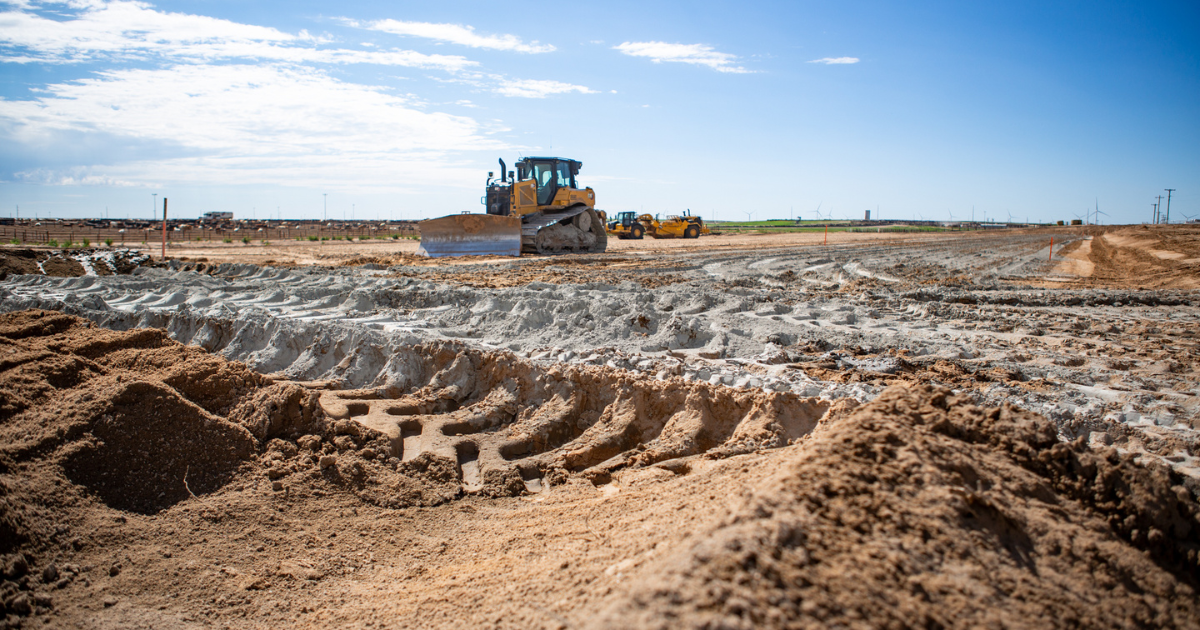
3.27.25
The Smart Way to Manage Feedyard Manure
Part 2: Manure Management Series | MJE, LLC
If there’s one universal truth in cattle feeding, it’s this: manure happens. And when you’re running a large-scale feedyard, it doesn’t just happen—it accumulates fast. How you handle it can mean the difference between a smooth operation and a costly, labor-heavy mess.
We don’t see manure as an afterthought—at MJE, we see it as an essential design element that deserves the same attention as any other part of the facility.
Here’s how we approach manure management in feedyards to ensure efficiency, compliance, and long-term value.
Let Gravity Work for You: Pen Design & Slope Optimization
Effective manure management starts with pen design. At MJE, we design feedyard pens with a minimum 2.5% slope and a maximum of 3.5%, ensuring that rainwater and manure move where you want them to—into ditches, not into your lagoon.
Collection ditches typically have a gentle 0.2% forward grade to carry runoff efficiently. In some feedyards, sloped pens drain through the pen itself, keeping back alleys dry while guiding waste into sediment basins or picket structures that catch solids before they reach the lagoon.
💡 Takeaway: Good slope design means fewer ruts, easier cleaning, and a healthier environment for your cattle.
Keep It Out of the Lagoon: The Power of Picket Structures & Settling Basins
Lagoon cleaning is expensive, labor-intensive, and a regulatory headache if mismanaged. Our goal is always to keep as much manure out of it as possible.
MJE incorporates:
- Picket structures that catch solids before they travel.
- Well-sized sediment basins that allow for dry, accessible cleanout.
- Strategically placed ditches that guide flow where it’s easiest to manage.
As CEO Aaron Jantz puts it, “It’s much cheaper to clean a dry basin than a full lagoon.” Enough said.
Fertilizer, Not Waste: Composting & Land Application
Most feedyards move manure straight from pen maintenance to the field for land application as fertilizer.
But increasingly, producers are exploring composting as a way to:
- Increase the value of their manure
- Reduce transportation costs (why haul water when you can haul dry material?)
- Create a sellable commodity instead of a waste product
While this approach is more common in dairies, feedyards are catching on—especially as manure pads become a standard add-on during construction. MJE recently constructed a pad for a client that gives them a dedicated composting space.
Designing with the End in Mind
One thing that sets our designs apart? We don’t just design for drainage—we design for long-term manure management success.
That means:
- Keeping pens clean to promote animal health
- Prioritizing labor-saving layouts
- Avoiding unnecessary cleanup costs by keeping solids out of water systems
MJE doesn’t build feedyards and hope the manure management works—we design it into the system from day one.’

Don’t Pay to Haul a Problem
As Operations Manager & feedyard designer Justin Hendrickson points out, “You don’t want to pay to haul water instead of manure.”
Whether you’re trying to keep solids out of the lagoon, optimize fertilizer value, or plan for composting, a well-thought-out system saves time, money, and stress.
If you’re ready to rethink how your feedyard handles waste, MJE is ready to help—with designs that actually make your life easier.
Stay Tuned…
We’ll be diving into Part 3 in our Manure Management series in the coming weeks.
For now, if you haven’t had a chance to read Part 1: Manure Management Matters: Addressing the Unique Needs of Feedyards & Dairies, click the link below to check it out!